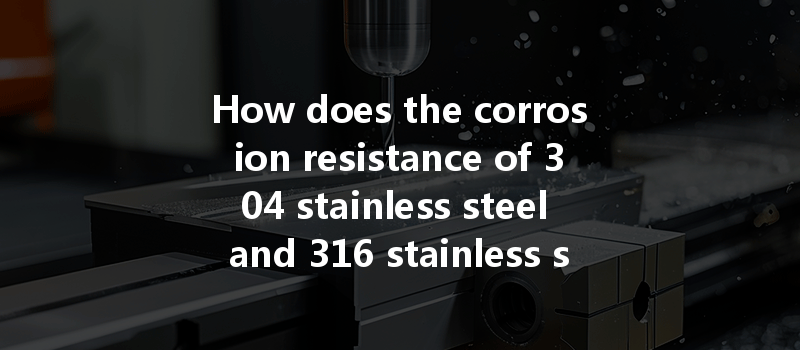If you were to survey manufacturers and machinists regarding the materials they use, odds are you would often hear the names 304 stainless steel and 316 stainless steel mentioned. Did you know that over 70% of stainless steel produced globally comprises these two popular grades? With such prevalence, it’s essential to understand how these materials function, especially concerning their corrosion resistance, especially in environments where reliability is paramount.
Understanding Corrosion Resistance: The Basics
Corrosion is a natural process that results in the deterioration of materials, primarily metals, due to chemical reactions with their environment. In simpler terms, if your metal components are not adequately protected from heat, humidity, or pollutants, they will corrode over time, potentially leading to failures and increased cost in maintenance.
This is where understanding the differences in corrosion resistance between 304 and 316 stainless steel becomes crucial, particularly when processing components through CNC machining. These two stainless steel grades are noteworthy for their distinct properties, which can significantly affect their suitability for various applications.
Key Differences Between 304 and 316 Stainless Steel
Composition
Benchmarking Corrosion Resistance
Corrosion Resistance: 316 stainless steel generally performs better than 304 in corrosive environments, particularly in marine settings or where chemicals are present, such as saltwater, acidic, or alkaline solutions.
Pitting Resistance: Due to the presence of molybdenum, 316 exhibits superior pitting resistance, making it more suitable for applications such as medical devices, food processing, and chemical processing.
Cost Dynamics: Is it Worth the Investment?
Given the enhanced properties of 316 stainless steel, it tends to be more expensive than
Performance in CNC Processing
When discussing machining, the material’s characteristics determine how it can be shaped and formed. Both 304 and 316 are amenable to CNC machining but have specific traits that might make one preferable over the other depending on the application.
Machinability

Best Practices for Machining Stainless Steel
To achieve optimal results when CNC machining either 304 or 316 stainless steel, consider the following techniques:
Tool Selection
Employ high-speed steel (HSS) or carbide cutting tools, depending on the scale and scope of the project. For applications where stainless steel is under severe wear, consider using specialized tooling designed for stainless steel alloys.
Cutting Parameters
Optimize cutting speeds and feed rates. While higher speeds can lead to better finishes, too high may increase heat generation, resulting in thermal expansion and potential distortion. Research indicates that optimal spindle speeds for stainless steel in CNC machining hover around 120-250 SFM (Surface Feet per Minute).
Coolants
Utilizing the appropriate cutting fluid is crucial for reducing heat and facilitating chip removal. Both water-soluble and oil-based coolants can be effective, although oil may provide better lubrication in heavy cuts.
Real-World Applications
304 Stainless Steel Applications
316 Stainless Steel Applications
Understanding Environmental Influences
Aside from physical composition, external environmental factors can heavily affect corrosion rates. Factors such as temperature, humidity, and proximity to chlorides (e.g., from saltwater) can all influence how quickly corrosion sets in.
: The Choice Between 304 and 316 Stainless Steel
In summary, 304 and 316 stainless steel grades exhibit different capabilities and resistances to corrosive environments. While 304 serves well in standard applications, 316 stands out in hostile settings where exposure to chemicals and saltwater occurs.
The implications of selecting the right material extend beyond immediate performance; they influence long-term operational efficiency and cost. Thus, understanding the differences between these grades is vital for engineers, designers, and manufacturers in the CNC machining sector.
The next time you begin a project that involves deciding between these stainless steels, think about not just cost but function, lifespan, and your operational requirements. Making an informed choice today will lead to successful applications tomorrow.
In light of what we’ve discussed, consider how frequently you encounter issues related to material choice in your own industry. The durability and reliability of your products hinge on such decisions; thus, it’s worth considering how embracing the right materials can set the stage for success in your projects.






